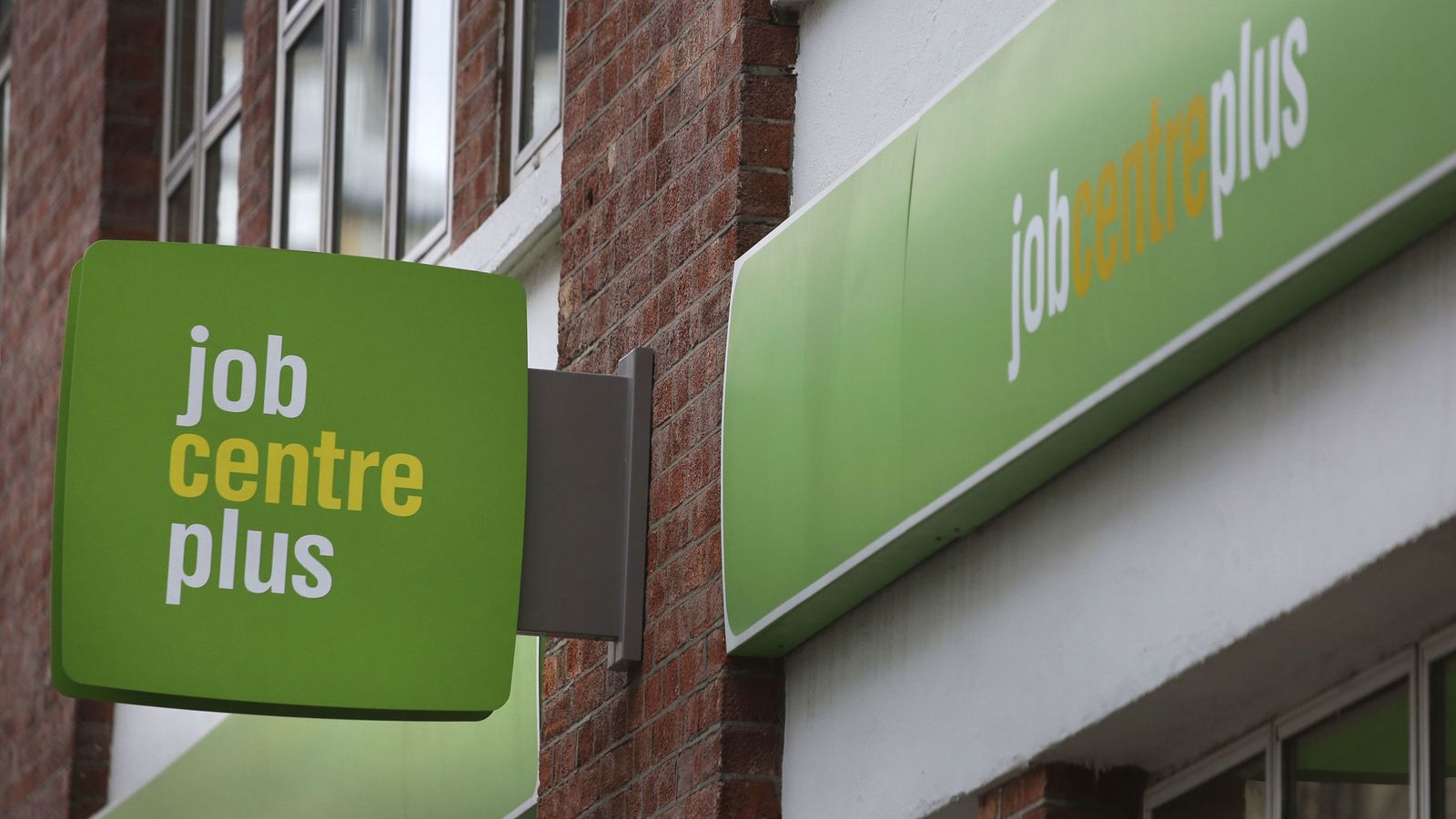After more than a year of sluggish growth, high inflation and rising interest rates, the unemployment rate is now rising.
Another 60,000 people flowed into unemployment in the three months to March, taking the headline unemployment rate to 3.9%. This was up from 3.8% in February and higher than expected.
Economists have long warned that a surge in unemployment is looming but, at 3.9%, unemployment is still low by historic standards and the labour market is tight.
Cost of living latest: Pensioners have just days to claim £301
Be the first to get Breaking News
Install the Sky News app for free
That goes some way towards explaining why wages are increasing at a robust pace.
Regular wages, excluding bonuses, grew by 6.7% between January and March (compared to the same period last year).
This was up from 6.6% and was driven by a big surge in public sector pay as the government struck deals with striking unions.
More than half a million working days were lost to strikes in March and, in the three months to March, public sector pay jumped by 5.6%, the biggest leap since 2003.
Although workers are securing chunky pay rises wage growth is still lagging inflation, which is in double digits.
Please use Chrome browser for a more accessible video player
So, wages are rising too slowly to maintain our living standards but they’re rising too quickly for the Bank of England, which fears wage growth could be fuelling inflation.
It is keeping a particularly close eye on pay in the private sector, which has a bigger impact on inflation.
Here, wages grew by 7% during the quarter. This is still uncomfortably high but it has come down from 7.3% during the previous quarter. This will give the Bank of England some breathing room.
Samuel Tombs, economist at Pantheon Macroeconomics, said the figure was in line with the Bank’s own forecasts.
“Wage growth is slowing rapidly enough for the monetary policy committee (MPC) to keep Bank Rate at 4.50% at its next meeting on June 22.”
Read more business news:
One in five taxpayers face 40% rate by 2027 – with these professions hard hit
Investigation into whether shoppers being overcharged for food and fuel
The labour market will most likely continue to deteriorate over the coming year as the number of people looking to take on extra work rises faster than demand for workers.
It means the unemployment rate could hit 4.25% by the end of the year. This the “equilibrium” rate that the Bank of England deems necessary to prevent the economy from overheating and inflation from rising.
“We expect these trends to continue over the coming months, and for the number of people out of the labour force due to young children also declining next year, when the government will increase childcare funding,” Mr Tombs said.








